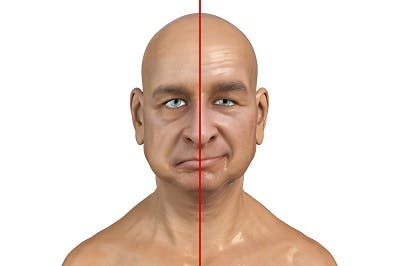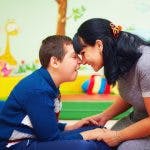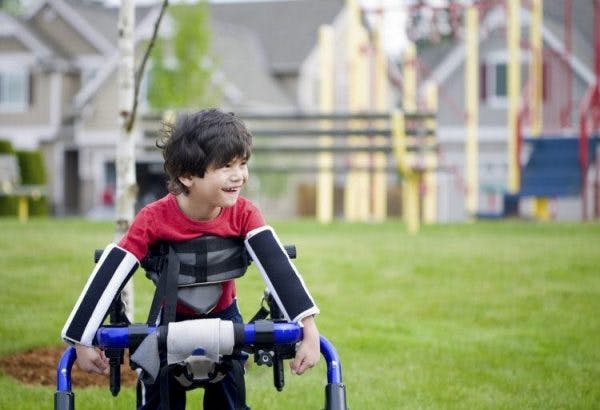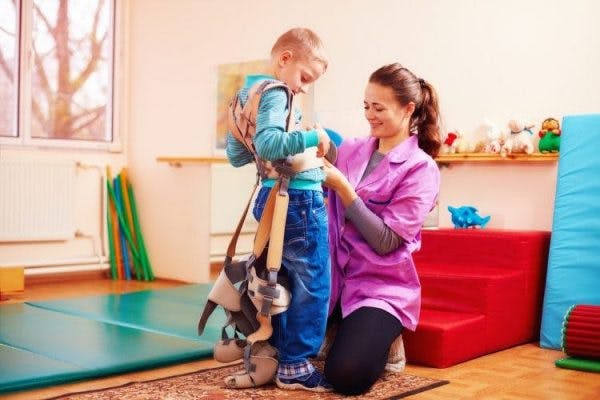When cerebral palsy affects the muscles in the face, it can impact an individual’s ability to communicate, breathe, and eat. As a result, it can be challenging for the individual to convey their needs and even socialize with those around them. Fortunately, there are several ways to improve or compensate for motor impairments in the face. Through these treatment techniques, those living with cerebral palsy can enhance their quality of life.
To help you understand what to expect when cerebral palsy affects the muscles in the face, this article will discuss:
- Is it common for cerebral palsy to affect the face?
- What are the effects of motor impairments in the face?
- What’s the difference between cerebral palsy and Bell’s palsy?
- Is it possible to treat motor impairments in the face?
- How to manage cerebral palsy that affects the facial muscles
Is It Common for Cerebral Palsy to Affect the Face?
Cerebral palsy is the result of damage to the areas of the brain that control motor functions. Depending on the location and severity of the damage, voluntary control over the muscles throughout the body can be affected. This can include a decreased ability to use the muscles in the face.
Motor impairments in the face can occur in all types of cerebral palsy (spastic, dyskinetic, and ataxic). However, they are more common in individuals with dyskinetic cerebral palsy than spastic or ataxic forms.
Additionally, the prevalence of facial motor impairments in individuals with cerebral palsy increases as overall gross motor function decreases. This means that the more severe the individual’s cerebral palsy becomes, the more likely it is for the facial muscles to be affected.
Motor impairments in the face are common amongst individuals with cerebral palsy. In fact, research suggests that:
- 25% of individuals with CP are non-verbal
- 1 in 15 individuals with CP require non-oral feeding
- 50% of individuals with CP experience motor-based speech impairments (dysarthria)
In the following section, we’ll discuss the effects of facial motor impairments in individuals with cerebral palsy.
Effects of Facial Motor Impairments in Individuals with Cerebral Palsy
Cerebral palsy can affect various muscles in the face, including the ones that control the tongue, throat, and mouth. These muscle groups we use both voluntarily and involuntarily. This can affect a wide range of functions, making it challenging to communicate, eat, and breathe.
Secondary effects of facial motor impairments include:
- Difficulties with chewing and swallowing
- Drooling
- Choking
- Difficulties controlling breathing
- Impaired speech or inability to speak
- Difficulties with facial expression
- Prolonged feeding times
- Snoring
- Malnutrition and consequently impaired growth
- Quiet or soft speech
Many of these symptoms can cause individuals with cerebral palsy to experience social isolation, which can lead to loneliness and a decrease in overall emotional wellbeing. It’s important to understand that if an individual uses an alternative form of communication, it does not mean that they are any less intelligent.
Many individuals with cerebral palsy can understand what you are saying and know what they want to say back. However, their facial motor impairments may prevent them from communicating their thoughts verbally.
What’s the Difference Between Cerebral Palsy and Bell’s Palsy?

Cerebral palsy and Bell’s palsy are conditions that can cause weakness or paralysis of the facial muscles. However, there are several distinct differences between the two.
Bell’s palsy is most commonly characterized by paralysis of one side (left or right) of the face. As a result, individuals with Bell’s palsy often demonstrate drooping of the mouth and eyelid on the affected side of the face. Although rare, there are instances where Bell’s palsy affects both sides of the face. Additionally, Bell’s palsy is a temporary condition caused by dysfunction of the peripheral nervous system and most people recover full control over their facial muscles.
In contrast, cerebral palsy is a lifelong condition caused by damage to the central nervous system. Cerebral palsy can cause weakness throughout the entire body, not just the face. Additionally, it often affects both sides of the face, which can make it difficult to chew, speak, and swallow.
Luckily, many individuals with cerebral palsy may be able to improve motor control in the face by engaging their brain’s natural ability to adapt, neuroplasticity. Up next, we’ll discuss what neuroplasticity is and the most effective way to promote it.
Is it Possible to Treat Motor Impairments in the Face?
Lack of facial control in individuals with cerebral palsy is caused by damage to the brain, not the muscles. Therefore, to improve these functions, you must target adaptive changes in the brain.
Neuroplasticity is the brain’s ability to make neuroadaptive changes based on the behaviors we repetitively practice. The key to strengthening control over the facial muscles is to consistently engage them.
Task-specific and repetitive practice helps stimulate the brain and reinforces demand for those functions. As a result, facial functions affected by brain damage can be rewired to unaffected regions of the brain and strengthened for active use.
Up next, we’ll discuss management interventions that can help individuals with cerebral palsy promote neuroplasticity or compensate for lack of facial motor control.
How to Manage Cerebral Palsy that Affects the Face
Every case of cerebral palsy is unique and individuals may experience various degrees of facial motor impairments. Management techniques should be personalized for each individual’s specific functional outcomes.
Below, we’ll discuss interventions that can help individuals with cerebral palsy manage facial motor impairments.
Participate in Speech Therapy
Participating in speech therapy can help individuals with facial motor impairments strengthen their communication and feeding skills. A speech-language pathologist can assess the severity of one’s facial motor impairments and create a custom rehabilitation plan consisting of activities and exercises to help strengthen the facial muscles, improve communication skills, and increase social participation.
They may also use specialized electrical stimulation devices for the face, such as VitalStim, to promote increased communication between the orofacial muscles and the brain.
Implement New Feeding Techniques
Another helpful way to manage facial impairments is to implement adapted feeding techniques. This may include:
- Blending food to change the consistency, reduce chewing, limit the likelihood of choking, and make food easier to swallow
- Thickening drinks to reduce the likelihood of aspiration (breathing liquid into the lungs)
- Scheduling longer meal times
- Using a surgically-inserted feeding tube
- Taking supplements to help fill in gaps in nutrition
These practices can help ensure that children with cerebral palsy have adequate nutritional intake to support optimal growth and development.
Use Augmentative and Alternative Communication
Individuals with severe facial muscle impairments may be unable to generate verbal speech. To compensate and allow the individual to be an effective communicator, a speech-language pathologist may recommend learning how to use augmentative and alternative communication (AAC).
AAC consists of using various techniques and devices such as communication boards, gestures, and voice generators to effectively communicate with others.
Use Speech Therapy Apps

One way to practice more repetitions of facial muscle exercises and promote neuroplasticity is to download speech therapy apps onto your phone or tablet. For example, the CT speech and cognitive therapy app includes over 100,000 speech therapy exercises designed by speech-language pathologists. Speech therapy apps provide 24/7 access to effective speech therapy activities so you can practice wherever and whenever is convenient for you.
Practice Correct Posture
Compromised posture can limit lung capacity and make it challenging for individuals to breathe normally. Along with difficulties controlling the muscles that make up the mouth, individuals with cerebral palsy may be susceptible to respiratory complications.
By promoting correct posture (through the use of orthotic devices and practicing core-strengthening exercises), individuals can improve breathing efficiency. This may lead to less fatigue and improved functioning of the body due to increased oxygen supply.
How Cerebral Palsy Affects the Face
Cerebral palsy can affect motor functions throughout the entire body, including the face. As a result, individuals may struggle with communication, feeding, and breathing. Fortunately, there are several ways to ensure that individuals with facial motor impairments receive adequate nutrition and learn to be effective communicators.
We hope this article helps you understand how cerebral palsy can affect the muscles in the face and know that treatment options are available to improve your quality of life.










